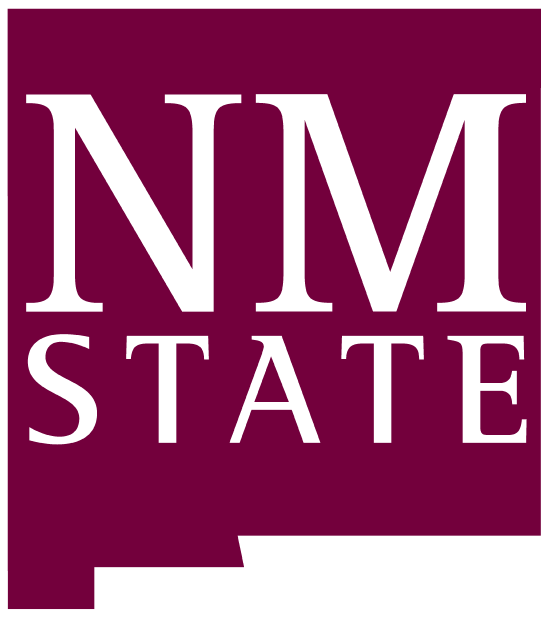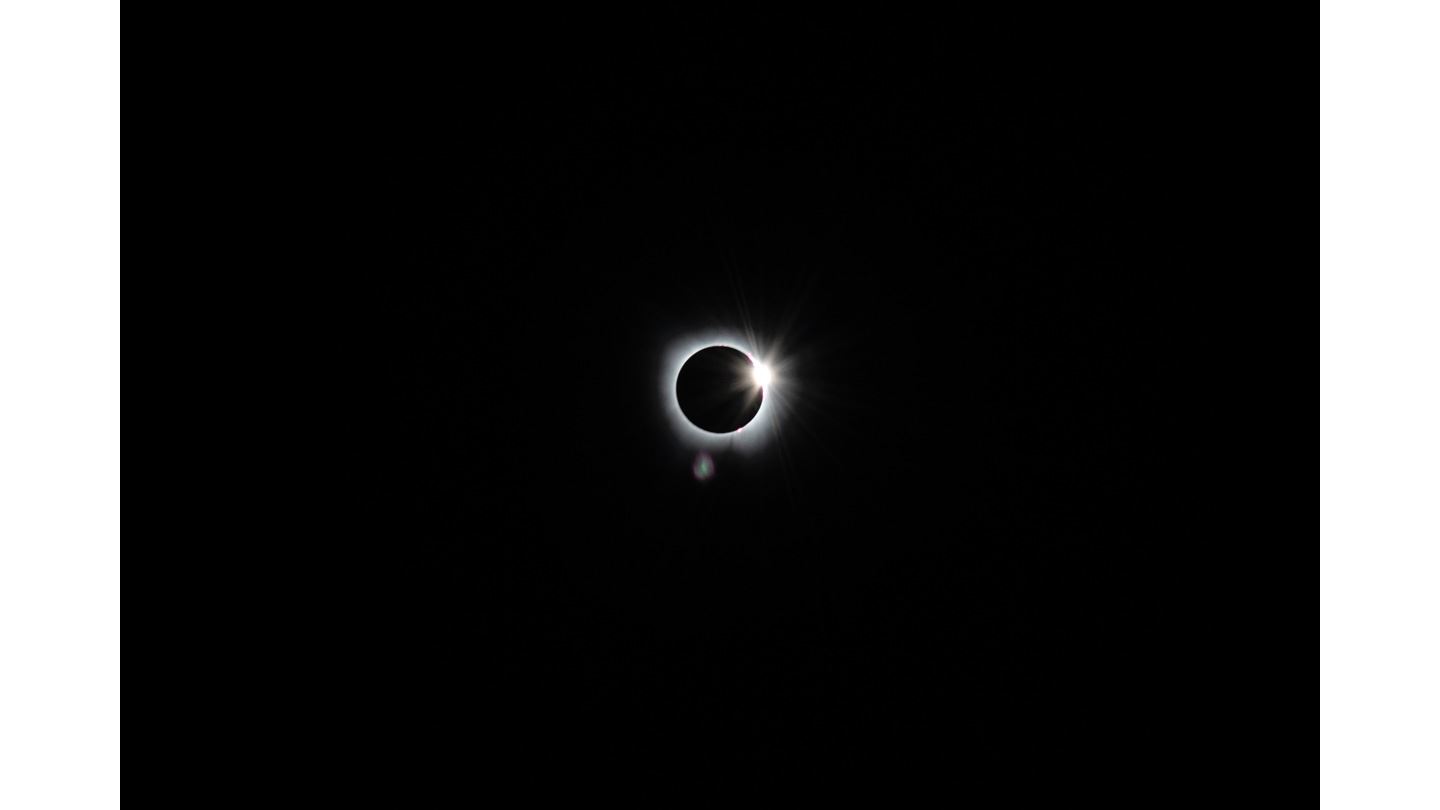Two solar eclipses swept across the United States in October 2023 and April 2024, inspiring millions to look skyward and think about astronomy, perhaps for the first time. For assistant professor Juie Shetye and her research team, the eclipses presented a unique opportunity to study a phenomenon called atmospheric gravity waves, or AGWs, and to engage with local communities about the science behind their research.
“Atmospheric gravity waves are essentially disturbances in Earth’s atmosphere, and you see them all the time in Las Cruces as ripples in clouds,” said Oana Vesa, postdoctoral researcher at Stanford University and a member of Shetye’s team. “They're a really large component in our global climate activity and weather models.”
Shetye gathered a varied group of people –from art to astronomy and economics to engineering –to join her two teams, funded by the National Eclipse Ballooning Project and the New Mexico Space Grant Consortium (NMSGC).
In addition to Vesa, Shetye’s first Ph.D. student, Shayan Abotalebi and Andrew Denny, engineers in NMSU’s Physical Science Lab, lent their skills to the team. Aiden Brealey-Rood, an NMSU junior engineering major, worked closely with Denny.
“I played a role in the actual balloon launches where we would fill up the balloons, we found out how much helium we needed, and we would fill it up and then attach a radiosonde to it. Brealey-Rood said. “Then we would launch it and then we had those radiosondes connected to computers and that's where all the data would go.”
Radiosondes are attached to the balloon and at various levels of the atmosphere, they transmit measurements via radio.
Interpreting the data from these atmospheric gravity waves is important for making accurate weather predictions and advising pilots about potential turbulence in unexpected areas.
To detect them, Shetye’s team launched the balloons equipped with radiosondes at regular intervals before, during and after the eclipses. As the eclipses progressed, these instruments collected data on the changing conditions of the atmosphere, like temperature, humidity and wind direction. “The first part was seeing them physically, that they're there. The second part was seeing those in our data sets,” Shetye said.
Subomi Oyewole, NMSU astronomy Ph.D. student, and Christine Houser, NMSU undergraduate student studying Information & Communication Technology, were instrumental in analyzing the radiosonde data.
During the April 2024 total solar eclipse, Houser helped check the data as it was uploaded to make sure it was clean. This gave Shetye plenty of work to do during the twelve-hour drive back from Granbury, Texas. “We knew that we had detected AGWs before I reached Las Cruces because we could make the initial plots of these detections very quickly,” Shetye said.
Not only did AGWs show up in the data—they were visible in photos. During October’s Annular Solar Eclipse, a clear sky gave way to clouds with a ripple pattern indicative of the AGWs the team was there to find. “We ended up actually crowdsourcing a lot of photos from the people in the community as well to help our investigation,” Vesa said.
The positive connection between the local community and astronomy that Shetye helped cultivate started well before the actual eclipses. Had it not been for Shetye’s outreach efforts, there might not have been a community photo library to pull from. Passing out flyers, advertising, appearing on radio shows and receiving support from the dedicated staff at New Mexico’s Artesia Science Center resulted in a large public turnout for the Annular Solar Eclipse. Curious members of the community gathered to watch the eclipse, learn a little science, and even help out with the balloon launches.
Judy Evelyn Silva, an NMSU administrator, earning a master’s degree in economics, was impressed by Shetye’s focus on community outreach as well as research.
“For me, the most interesting thing was the outreach because that’s the focus of bringing diversity into the project,” Silva said. “Personally, I have three kids, so it was cool to tell kids what they can be. I mean many of them don't know what they want to study, but we could show how this can be applied to engineering with Shayan and Andrew as clear examples.”
“The day of the launch in Artesia, they were able to bring a lot of families and kids out there to come do the launches,” Abotalebi said. “We were able to get some kids to launch some of the balloons and I think that's kind of exciting for them to be able to interact with that and maybe lead them towards a STEM route.”
Paulo Oemig, director of NMSCG, has a similar hope. Devoted to recruiting minority students into STEM, he and his administrative team joined Shetye and the Artesia Science Center Staff for the annular eclipse in October 2023.
Marco Martinez, an NMSU student majoring in math, described the project as an amazing opportunity to add variety to his studies. “I had the opportunity to learn how to use the computers and the sensors we send up to the sky and how to do the ballooning and share that with others and know the steps we needed to launch the balloons.”
“The second eclipse launch was a success because of all the hard work that Marco and Aiden put into it, what they learned from the first eclipse with Andrew and Shyan led to their work in the second eclipse,” Sheyte said.
Kayla Blundell, an NMSU art student, joined the team to help guide her creative process in making a sculpture to memorialize the solar eclipse research, which is now on display at the Solar Observatory at Sunspot, New Mexico. See her sculpture.
Houser joined in on the creativity by designing a logo for the project. “Christine did the logos, and we printed them out. We all had the eclipse t-shirts,” Shetye said.
Shetye and her teams’ work resulted in two peer reviewed publications in the Bulletin of the American Astronomical Society: “Revealing the Dynamics of Atmospheric Gravity Waves: Insights from an Annular Solar Eclipse Event at Artesia Science Center, NM” and “Characterization of Atmospheric Gravity Waves Observed During a Total Solar Eclipse in Granbury, Texas.”
“Having these papers published gives us that benchmark. We have reported a wave speed analysis,” Shetye said. “These are the patterns that we see, and now we are looking into the effects of these patterns on the local environment.”
Two more papers are still to come from Shetye and her team.
-30-
CUTLINE: The moon eclipses the sun during the April 2024 total solar eclipse in Granbury, Texas. (Courtesy photo)
CUTLINE: A group of observers wear protective eclipse glasses as they sit back and watch the April 2024 total solar eclipse in Granbury, Texas. (Courtesy photo)
CUTLINE: NMSU assistant astronomy professor Juie Shetye and her AGW research team at Artesia Science Center, New Mexico, for the October 2023 annular solar eclipse. (Courtesy photo)
CUTLINE: A research team member helps a group of children launch a balloon in Granbury, Texas during the April 2024 total solar eclipse. Each balloon carried a radiosonde; a payload with instruments that measured changes in wind direction, temperature, humidity, pressure and sunlight throughout the eclipse. (Courtesy photo)
CUTLINE: A cloud with a ripple pattern consistent with atmospheric gravity waves is visible in the sky during the October 2023 annular solar eclipse in Artesia, NM. (Courtesy photo)
CUTLINE: Research group members working with a balloon during the October 2023 annular solar eclipse in Artesia, NM. (Courtesy photo)

